-
The Earliest History
The Earliest History
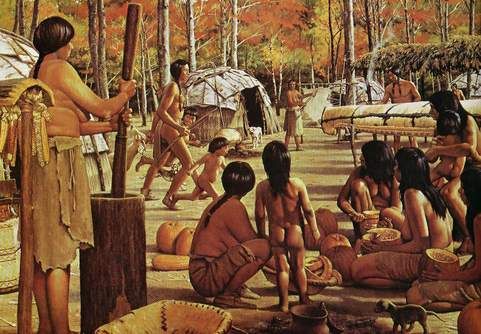
Can we get a headline?
The terrain, the Wabash River, and the creeks you see today in Tippecanoe County came to their present condition about 10,000 years ago as the last continental glacier retreated northward.
Based upon current evidence, Paleo Indians are thought to have arrived in this part of North America during the end of the last glaciation (Wisconsin) of the Ice Age. We know they were here because we have found many examples of their well-made stone tools, but we know little else about their culture in part because they did not leave behind much evidence of their lives in any one place.
It was during the late Woodland Indian Period that the intense cultivation and modification of crops such as corn and squash began. The bow and arrow first appeared during the Woodland Period. Prior to that time most of the chipped stone tools were either spear heads, knives or scrapers.
When the first Europeans made contact with the Native peoples of Wabash region sometime around 1679. They would later come to know these early tribes as Wea (a division of the Miami), Piankeshaw, Kaskaskia, Kickapoo, Mascouten and Potawatomi.
The Native American settlement of Kethtippecanoogi is the origin of the name Tippecanoe. It is a Miami word which means Village of the Succor Fish People. The rivers were filled with succor or Buffalo fish.
-
Fort Ouiatenon
Fort Ouiatenon
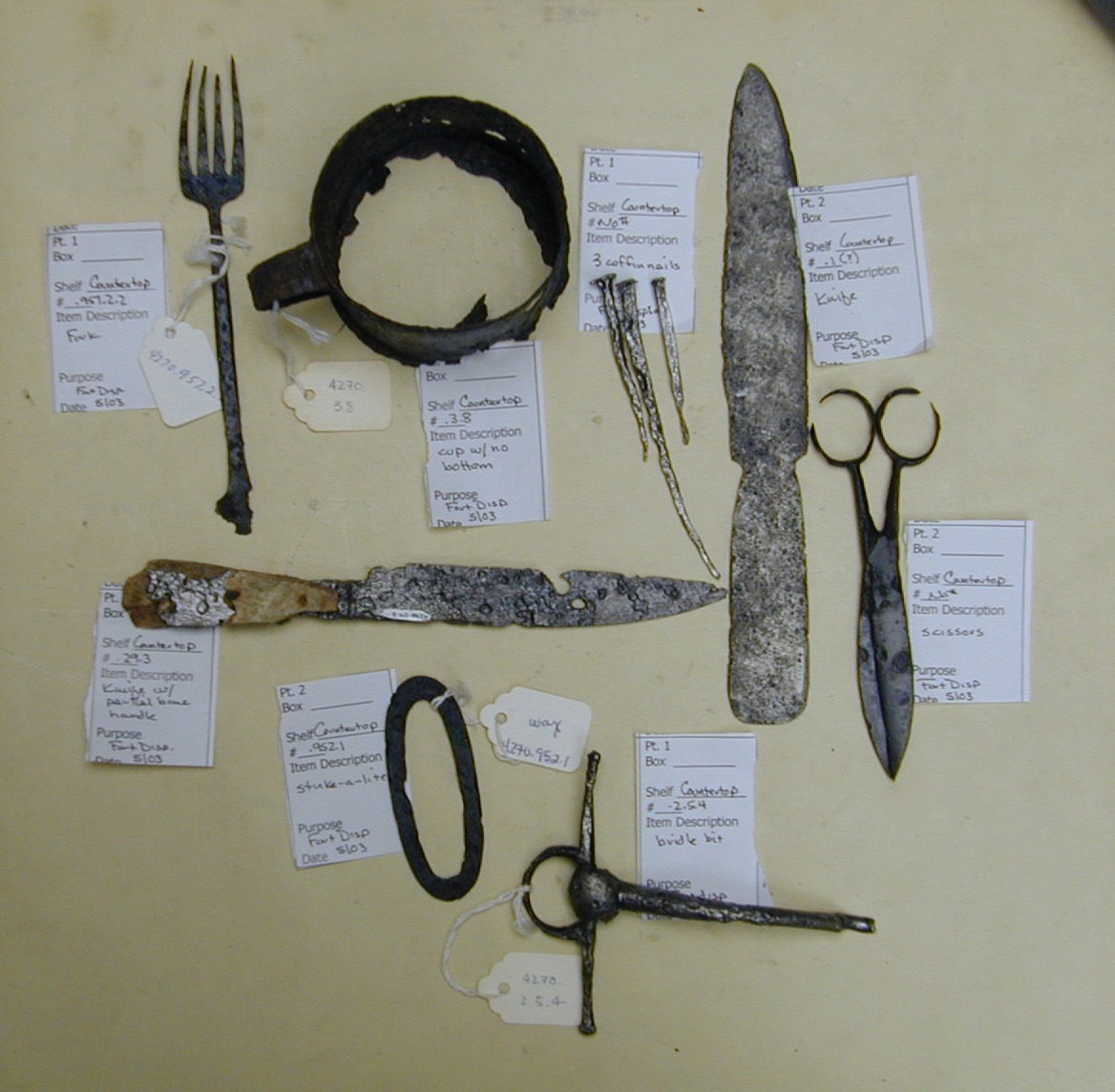
Can we get a headline?
In 1717, the French established the trading post of Fort Ouiatenon along the banks of the Wabash River. This site was chosen for its access to water (a major transportation route) and proximity to Native American tribes with whom the French wanted to trade goods. Trade goods were transported by French Voyageurs down a series of waterways from Canada. These goods were traded with the area tribes for animal furs, which were transported back to Canada and then Europe. Trade at Ouiatenon was generally peaceful until the French lost their holdings during the French and Indian War in 1761.
The British took control of formerly French territory, including Fort Ouiatenon. Their control was short-lived, however. Soon Great Britain was at war with the American Colonists, who took control of British holdings during the American Revolution. During the British and American occupation of Ouiatenon, relationships with the Native tribes slowly deteriorated. Peaceful trade relations broke down and conflicts broke out between the military and native villages. By 1791, Fort Ouiatenon was abandoned and in a few short years its location was all but forgotten.
In the early 1900s, there was a renewed interest in discovering the site of Fort Ouiatenon fueled by several local historians. Several sites were suggested as the original fort site, but it wasn’t until the late 1960s that archaeological evidence supported the discovery of the actual site of Fort Ouiatenon. Today, archaeological work continues at the site of Fort Ouiatenon to learn more about the Europeans and Native Tribes who lived in around the site for nearly a century.
-
The Battle of Tippecanoe
The Battle of Tippecanoe

Can we get a headline?
From the very beginning of European settlement in North America there was a lack of appreciation for, and understanding of the opposing cultures between the Native Americans and Europeans. Throughout the negotiations of treaties and the formulation of Indian Policies by the governments of France, Great Britain, and finally the United States, agents operated under certain assumptions about the character of the Indians which affected the nature of the proceedings. The Native Americans had no concept of private land ownership, although they did recognize territorial claims among tribes.
At just that time the Shawnee tribe produced a charismatic leader in young Tecumseh and another, somewhat unexpectedly, in the form of Tecumseh’s younger brother Lalawethika who became known as Tenskwatawa (the Open Door, or Shawnee Prophet).
In 1808 Tecumseh and Tenskwatawa moved their followers from western Ohio and established a new town near the confluence of the Tippecanoe and Wabash Rivers on the site of a former 18th century trading post Keth-tip-pe-can-nunk which had been destroyed by the Americans in 1791.
Reports of the strengthening confederation worried Americans who had begun to settle in the Indiana Territory. Tecumseh was attempting to recruit tribes from as far west as Iowa and as far south as the Gulf coast into a confederation to resist further encroachment of white settlers on their lands.
William Henry Harrison, Governor of the Indiana Territory, had orders from the Secretary of War to cause the evacuation and dispersal of the population at Prophet’s Town by peaceful means if possible, but by force if necessary. In September of 1811, while Tecumseh and many of his warriors were on a southern recruiting trip, Governor Harrison organized a small army of 1000 men. Hoping to disperse the Indians at Prophet’s town while Tecumseh was away, Harrison marched his army north from Vincennes to Prophet’s town, arriving on November 6, 1811.
Although Tecumseh had warned his brother not to attack the white men until the confederation was strong and completely unified, the Prophet lashed his men with fiery oratory. Claiming the white man’s bullets could not harm them he led his men near the army campsite. From a high rock ledge, west of the camp, he gave an order to attack just before daybreak on the following morning.
Harrison’s superior numbers and firepower carried the day and the fighting ceased after two hours. Harrison and his force held their positions at the expense of thirty-seven soldiers killed outright, twenty-five others were to die of injuries, and over 126 others were wounded.
Disheartened, the braves returned to Prophetstown and threatened to kill Tenskwatawa, only to discredit his leadership and the spells that he had cast to protect them. The distrust for Tenskwatawa caused the inhabitants to immediately abandon Prophetstown, leaving it wide open for Harrison’s raid the next day.
Most historians consider the Battle of Tippecanoe as the opening shots of the War of 1812 and Harrison’s political ambitions were significantly boosted as a result of the battle. The Native American defeat in this battle proved to be their last unified stand against American settlement.
-
Early Development
Early Development
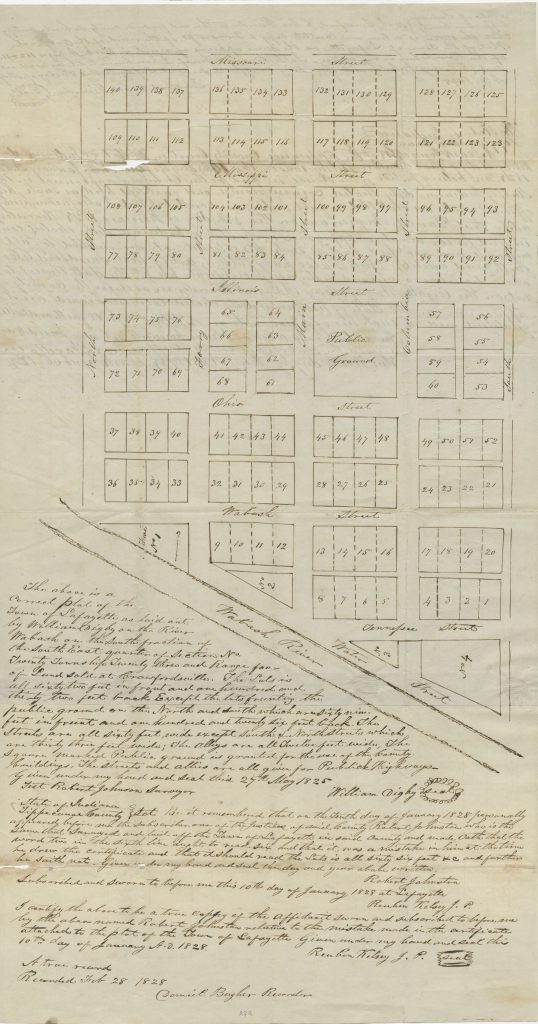
Can we get a headline?
The environment of Tippecanoe County played an important role in the early settlement and the later prosperity of the area. The dense forest areas presented challenges to settlers who struggled to clear spaces for crops, but they were at first favored over the prairie lands. Early settlers believed that if land could not grow trees it must not be fertile enough to grow crops. It did not take many years for farmers to realize their first instincts had been wrong. The prairie soils were among the richest and deepest in the world.
There were no published guidelines for the early pioneers about selecting land for their farms and homes. They usually explored the area ahead of visiting the land office to get some idea of what locations they were interested in before attending a land sale. Settlers often visited the prospective locations up to a year before actually moving. Many families moved into the area well ahead of the government’s completion of the official surveys before the land was even for sale.
The town site for Lafayette was purchased by William Digby in December 1824, and the town was platted on May 27, 1825. In 1825, the county of Tippecanoe was also established, with Lafayette selected to be the county seat.
To propel Tippecanoe County forward, better transportation systems were needed. This infrastructure would help the growth of the County’s agriculture and industry.
Construction of the Wabash and Erie Canal began in Fort Wayne in the summer of 1832 and reached Lafayette in 1840. By the time digging of the canal began, Lafayette had grown but it was still a nondescript clutter of log cabins and shacks, a few frame houses, several hotels of dubious merit, and a two story brick courthouse on the square.
When the Railroad reached Lafayette in 1854, canal traffic began to decline. Although some canal traffic continued until 1874, the canal began to fall into disrepair as revenue declined. The canal in Lafayette soon became an eyesore of stagnant water and trash, eventually requiring civic action to fill in the canal bed. The railroad took over as the major form of transportation of goods and people throughout the county and beyond.
-
Agriculture
Agriculture
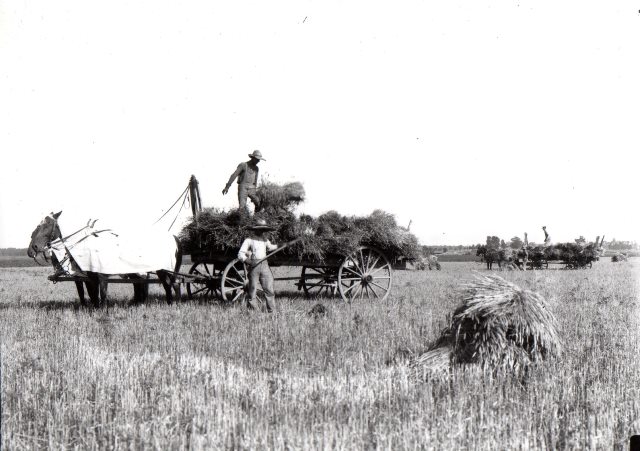
Can we get a headline?
Early crops were corn, oats, wheat, rye, buckwheat, barley, flax, hemp, and clover. In the prairie regions the prairie grasses were also harvested for hay. Grist mills were among the very earliest commercial establishments catering to farmers. The early settlers brought some livestock with them including swine, hogs, cattle and horses but often they were of low quality and left to forage on their own.
During the very early days of settlement agricultural methods were little changed from methods that had been used for hundreds or thousands of years. Improvements in agricultural methods, including changes in machinery, and improvements of livestock and crop management began prior to the Civil War and continued into the 20th century. Increased means of efficient transportation also supported the growth of agriculture in Tippecanoe County. The area was soon able to export extra crops out of the county for additional income.
In 1870, the selection of Tippecanoe County as the home for the new agricultural land grant college, Purdue University, also boosted the practice of agriculture in the area.
-
Purdue University
Purdue University
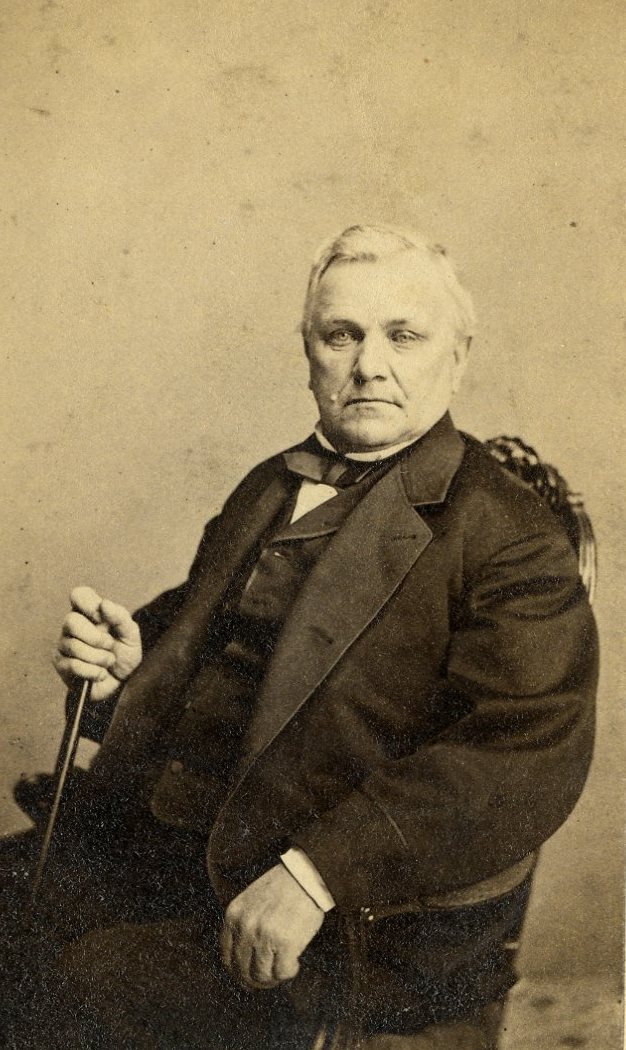
Can we get a headline?
By 1866 the state’s political process involved in setting the location of the new agriculture college had narrowed the selection to Battle Ground and Indianapolis as the strongest contenders. By 1869 the legislature was still deadlocked between the choices of Monroe County, Tippecanoe County, or Marion County. It was at that point that local merchant John Purdue entered the land grant argument with money which broke the deadlock in favor of Tippecanoe County. He offered $100,000 of his own money on top of all other Tippecanoe County offers, stipulating the college be located at Battle Ground and that it be named after his surname.
In a letter, Purdue pledged to increase his original donation to $150,000. In addition, the new college was to be in Tippecanoe County, called Purdue University, and the college’s board rather than the legislature was to select the precise location. Purdue pledged 100 acres for a farm and campus and said he could get his wealthy friends to pay for new buildings. That offer broke the deadlock in the legislature.
The Purdue law required the trustees to select the precise location within Tippecanoe County no later than January 1, 1870. Trustees determined they wanted the new school located within a 2.5 mile radius of the courthouse but left the final decision to Purdue Trustee Henry Taylor, a Lafayette Lumber dealer, and to John Purdue himself. The initial land purchases were complete by 1871 and ground was broken for the first buildings on Aug 9, 1871. The first classes were offered in March 1874.
-
Industry
Industry
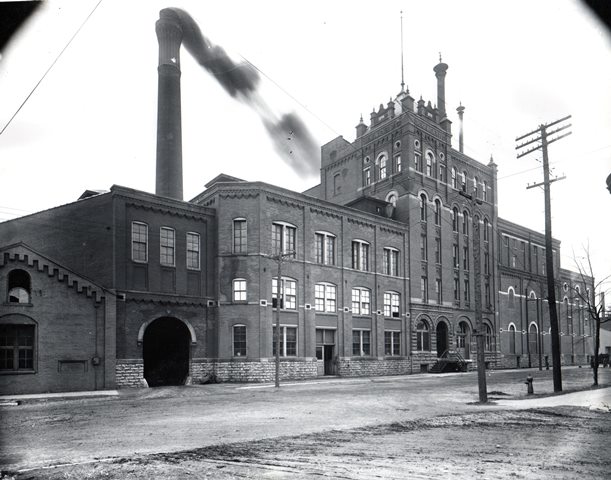
Can we get a headline?
Located mid-way between Indianapolis and Chicago, Tippecanoe County has always had an advantage of location in terms of transportation and exporting goods. Industry, in addition to agriculture, was and remains an important force for the local economy.
The 1849 Gazetteer gave a glowing report of conditions in Tippecanoe County at that time. There were, in the county, 13 merchant mills, 6 grist mills, 20 saw mills, 4 woolen factories, 84 stores, 14 warehouses, 2 packing houses, 2 slaughtering houses, 28 lawyers, 53 physicians, 37 preachers, 190 carpenters, 53 masons and plasterers, 25 cabinet makers, 52 coopers, 8 boat builders, 20 wagon makers, wheel wrights and turners, 3 millwrights, 13 printers and book binders, 64 shoe makers and saddlers, 60 blacksmiths and coppersmiths, 20 tailors, and 55 mechanics of various trades.
As technology changed, so too did the industry of Tippecanoe County. Early industry was closely tied to agricultural production. Today Tippecanoe County industries produce materials to ship around the world.
